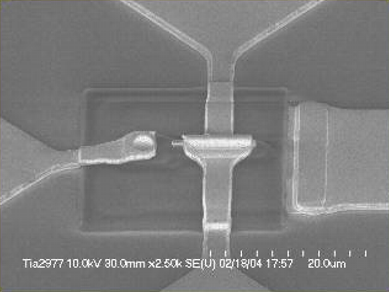heterojunction bipolar transistor (HBT)
The heterojunction bipolartransistor (HBT) is an improved bipolar junction transistor( BJT) that can handle highest frequencies up to several hundred gigahertz( GHz).
The heterojunction bipolar transistor is an NPN transistor in which the base is made of a semiconductor material such as gallium indium phosphide (GaInP) or aluminum gallium arsenide( AlGaAs), which is heavily positively doped and has a large band gap between the conduction band and the valence band.
The emitter and collector, on the other hand, are negatively doped and have a smaller band gap. There are several semiconductor materials that meet these characteristics: Indium phosphide( InP) in combination with indium gallium arsenide( InGaAs) or indium gallium phosphide (InGaP) and gallium arsenide( GaAs).
The base of HBT transistors has large bandgaps and is only a few atomic layers thin, allowing electrons to pass through it virtually unaffected.
HBTs are used in ultrafast circuits and in microwave technology. In addition, HBTs made of indium phosphide and indium gallium arsenide (InGaAs) are ideal for monolithic opto-electronic circuits. Furthermore, HBTs are used in RF mixers, A/D converters and D/A converters.

